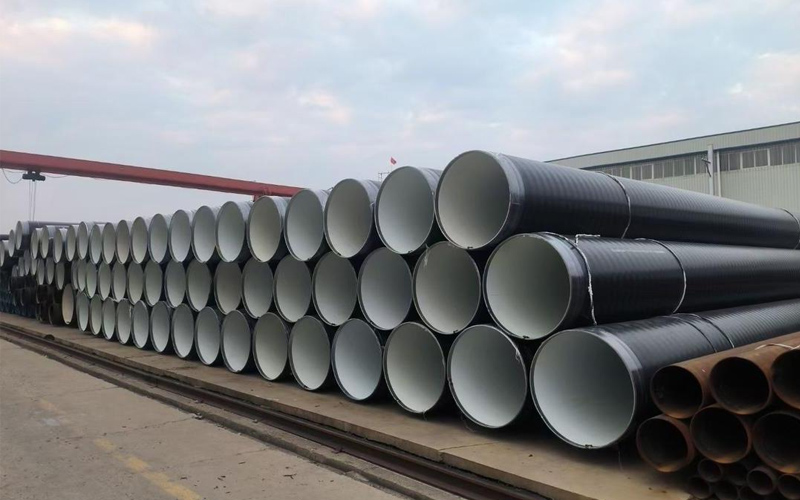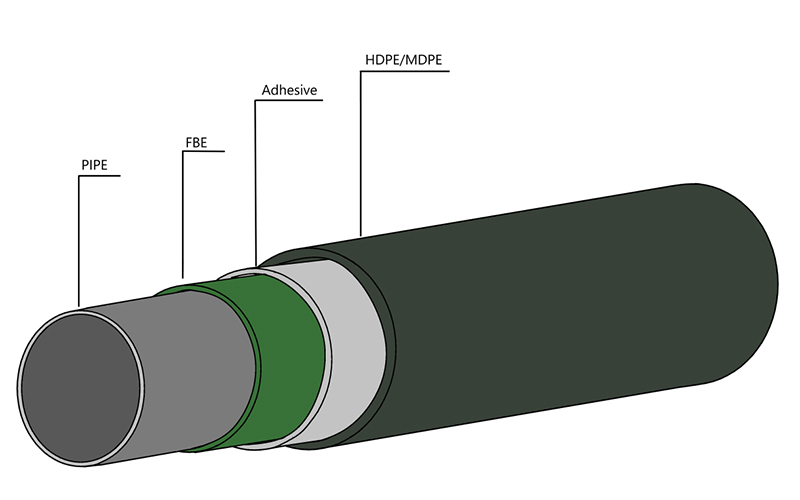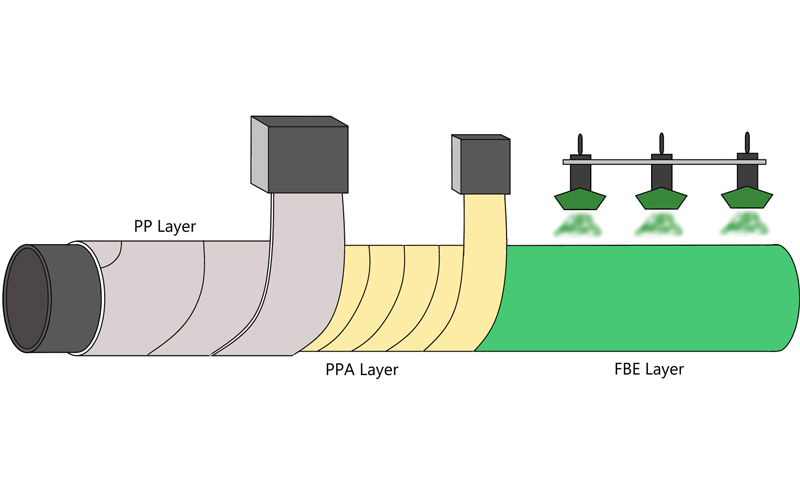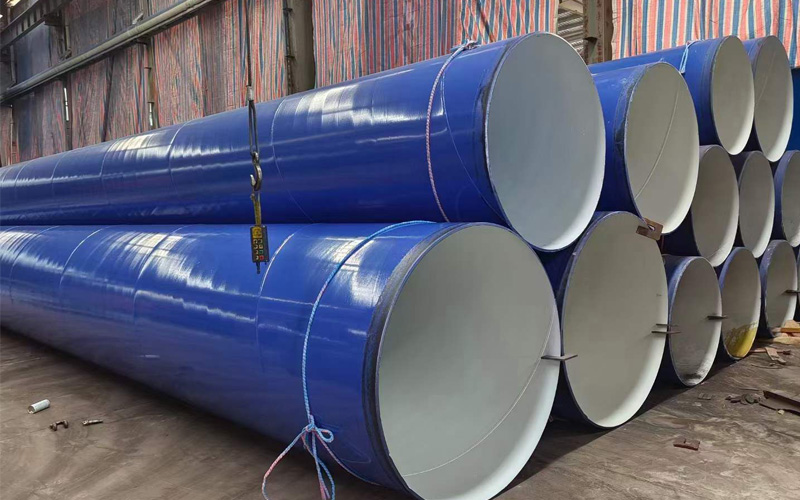Carbon Steel Floating Pipeline Systems: Innovative Applications of LSAW/SSAW Steel Pipes in Marine Engineering
In the field of the marine engineering, the importance of the floating pipeline systems is increasingly evident. Whether it is ensuring the smooth flow of the navigation channels through the dredging operations or the transporting resources through the marine oil and gas development, their stable operation is important. When constructing the floating pipeline systems, the selection of the pipe materials is the utmost importance. Among the carbon steel pipe materials, the LSAW steel pipes and SSAW steel pipes offer the significant advantages and are the ideal choice.
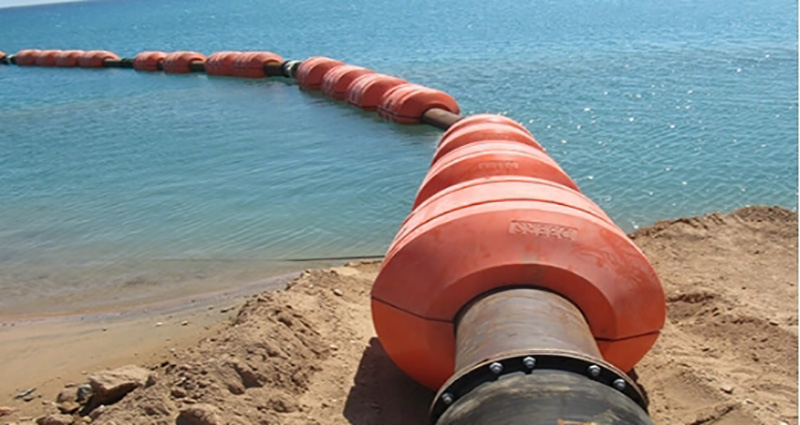
1. Core Structure of Floating Pipelines
1.1 Pipe Material Selection
1.1.1 LSAW Steel Pipes
LSAW steel pipes are suitable for the large-diameter, high-pressure applications, such as the subsea oil transportation projects. Their diameter could exceed 1000 mm, meeting the demands of the large-scale crude oil transportation. In the complex subsea environments, the thick-walled design and the high pressure-bearing capacity of LSAW steel pipes are fully utilized. In the project, LSAW steel pipes with the wall thicknesses exceeding 20mm were used, capable of the withstanding pressures of tens of the MPa, while the welds maintain toughness at the low temperatures, ensuring safe the oil and gas transportation.
1.1.2 SSAW Steel Pipes
SSAW steel pipes are the economical solution for the medium- and the low-pressure transportation and could widely used in the dredging projects. The dredging operations require the flexible mud discharge pipes. SSAW steel pipes are lightweight and cost-effective, typically using diameters of 600–800 mm, and are combined with the floats to achieve the material transportation. Their spiral welded seam design adapts to the bending stresses, maintaining the integrity during the frequent the position adjustments and reducing the engineering costs.
1.2 Key Connection Technologies
1.2.1 Floating Pipe Flanges
The floating pipe flange are the specialized waterproof designs for the offshore pipeline connections, utilizing the special sealing materials and the structures to withstand the seawater corrosion and the wave impacts. At the connection points between the offshore oil and gas platforms and the pipelines, the multi-layer sealing the rubber rings and the high-strength bolts ensure the integrity of oil and gas transmission.
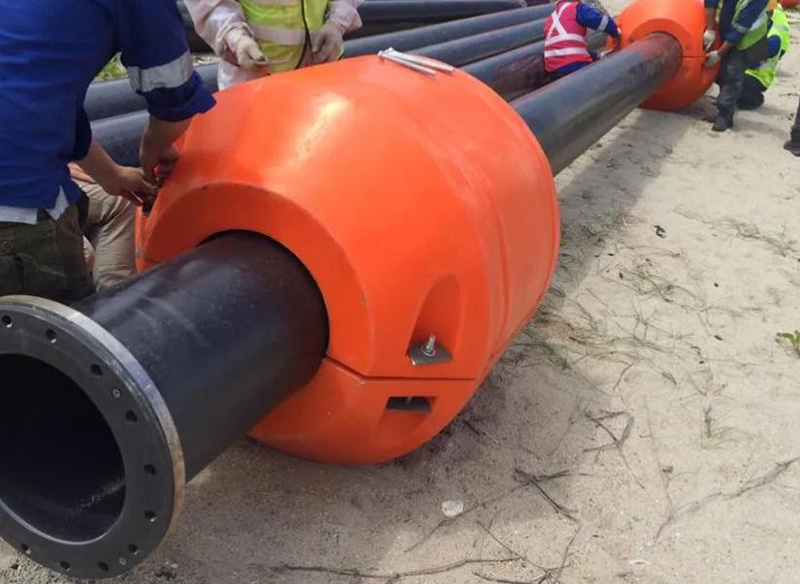
2.2.2 Dynamic Stress Compensation Technology
The complex marine environment poses the dynamic stress threats to the pipeline safety caused by the waves.The dynamic stress compensation the technology employs the flexible elements or adjustable the support structures to absorb and distribute the stress. In the large-scale cross-sea floating pipeline projects, expansion joints and universal joints are used to allow the pipeline expansion, contraction, and rotation, thereby the counteracting wave displacement and the stress and extending the pipeline lifespan.
2. Floating Support Structures: From Components to Systems
2.1 Floating Pipe Support
2.1.1 Function
The floating pipe could support serve as the distributed buoyancy units to bear the weight of the pipeline. In the large-scale dredging projects, they are installed every 10–15 meters to provide the uniform buoyancy support, reducing the stress on the pipeline and preventing the damage.
2.1.2 Advantages of Carbon Steel Pipe Supports
The floating pipe supports made of the carbon steel pipes exhibit the excellent resistance to the seawater corrosion. After undergoing the hot-dip galvanizing or the high-performance anti-corrosion coating treatment, they could use in the seawater for the extended periods, with the maintenance cycles extended from the several years to over a decade, thereby reducing the maintenance costs and downtime.
2.2 Modular Floating Pipe shelves
The modular floating pipe shelf utilize the modular buoy structure, typically made from the SSAW steel pipes. The buoy is filled with the lightweight,the high-strength materials could provide buoyancy, while the frame structure ensures the structural integrity. They can be flexibly assembled and disassembled as needed, making them widely used in the construction of the temporary piers and the equipment platforms, such as in the offshore oil exploration projects, where they could quickly erected and easily relocated and reused after the project completion.
3. Typical Application:Floating Pipe Dock
3.1 Structural Analysis
3.1.1 Basic Unit
The basic unit of the floating tube terminal consists of a floating pipe array forming a closed float box, typically welded or flanged together using the high-strength carbon steel pipes to provide the buoyancy. For the small floating pipe terminals, the dimensions of the float boxes may be 5 meters in length, 2 meters in width, and 1.5 meters in height, with the multiple float boxes connected to support the weight of the terminal and vessels.
3.1.2 Connection System
The connection system uses the high-strength bolts and the sealed flanges (floating pipe flanges). The High-strength bolts could provide clamping force to withstand the wind and waves and the vessel impacts, while the sealed flanges prevent the seawater ingress that could affect buoyancy. The high-strength bolts could use in the large floating pipe piers may have a strength grade of 10.9 or higher.
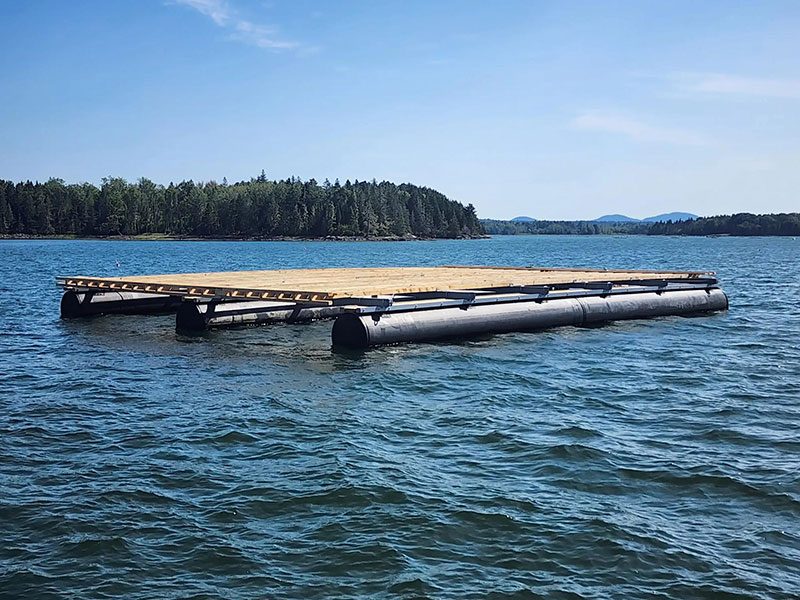
3.2 Advantages of Carbon Steel Pipes
3.2.1 LSAW Pipes
In the core load-bearing framework of the floating pipe piers, LSAW pipes could widely used due to their high strength and the large diameter advantages. For the piers capable of accommodating thousand-tonne vessels, the main load-bearing framework uses LSAW pipes with the diameter of 800 mm and the wall thickness of 15 mm to ensure the pier stability.
3.2.2 SSAW Pipes
SSAW pipes offer the significant cost-effectiveness in the manufacture of the auxiliary floats. In the certain inland river floating pipe terminal project, a large number of the SSAW pipes with the diameter of 400mm were used to manufacture the auxiliary floats, ensuring the performance while the controlling costs.
4. Engineering Practice: Design Considerations for Floating Pipeline System
4.1 Dynamic Load Management
The arrangement of the wave compensation supports is critical for the dynamic load management. In the areas with the frequent waves, wave parameters are calculated to reasonably increase the number and density of supports. For example, in the open-sea projects, supports are installed every 5–8 meters to reduce the pipeline displacement and stress, ensuring the safe operation.
4.2 Corrosion Protection Solutions
4.2.1 Epoxy Coating
The epoxy coating is a commonly used the corrosion protection method for the carbon steel pipes, offering the excellent adhesion and corrosion resistance. Before the application, the pipe surface must be thoroughly cleaned to the remove impurities, ensuring the coating bonds tightly with the pipe. In a marine aquaculture floating pipeline project, the carbon steel pipes treated with the epoxy coating showed no significant corrosion after years of exposure to the seawater.
4.2.2 3PE Corrosion Protection Technology
The 3PE corrosion protection technology could involve sequentially applying the epoxy powder, adhesive, and polyethylene layers to the steel pipe surface, forming the multi-layer protective structure that significantly enhances the corrosion resistance. This technology has been applied in the important subsea oil and gas transmission pipeline projects, with the pipeline service life exceeding 30 years.
4.3 Installation and Maintenance
The quick-release flange design the facilitates the installation and maintenance of the floating pipeline systems. During the installation, quick connections can be made, and during the maintenance, the faulty sections can be rapidly disassembled. In the dredging projects, when the issues arise with the mud discharge pipelines, the quick-release flange allows for the rapid replacement of the faulty sections, minimising the impact on the project schedules.
Conclusion
LSAW and SSAW carbon steel pipes hold the significant value in the field of the floating technology. LSAW pipes excel in large-diameter, high-pressure scenarios and are critical for the subsea oil transportation operations; SSAW pipes are cost-effective and play a vital role in the medium-to-low-pressure transportation scenarios. Additionally, a systematic design philosophy that integrates the components such as pipes, supports, and flanges is crucial for enhancing the project reliability. By selecting appropriate pipe materials, optimising connection and support structures, and comprehensively considering the factors such as the dynamic loads, corrosion protection, and installation/maintenance requirements, a safe, stable, and efficient floating pipeline system can be constructed to meet the demands of the marine engineering development and could provide support for marine resource exploitation.
Get Your Custom Steel Pipe Quote Today!
Provide us with your project details (like application, specifications, quantity). Our experienced team will respond with a tailored solution and competitive quote within 24 business hours.
Related Articles
ASTM A53 vs. API 5L: A Guide to Selection and Application
Introduction:Technology differences determine success or failure, and selection needs to be “precise”
Steel Density Analysis: Core Differences between Mild and Medium Carbon Steels and Industrial Applications
3LPE coated steel pipe: a solid barrier in the field of industrial corrosion protection
3LPP coated pipe: anti-corrosion guard in high temperature and high pressure environment
FBE steel pipe: the technological armor of the steel defense line
HOT TAGS
latest posts
- ASTM A53 vs. API 5L: A Guide to Selection and Application
- Cracking the Code: What Makes SSAW Spiral Steel Pipes the Engineer’s Top Pick Worldwide
- What is ASTM A252 pipe? Engineering basic solution.
- A Concise Guide to EN 10217: European Standard for Pressure Welded Tubes
- The Hydrostatic Test: Why It’s the Final Defense for API 5L Pipe Integrity











